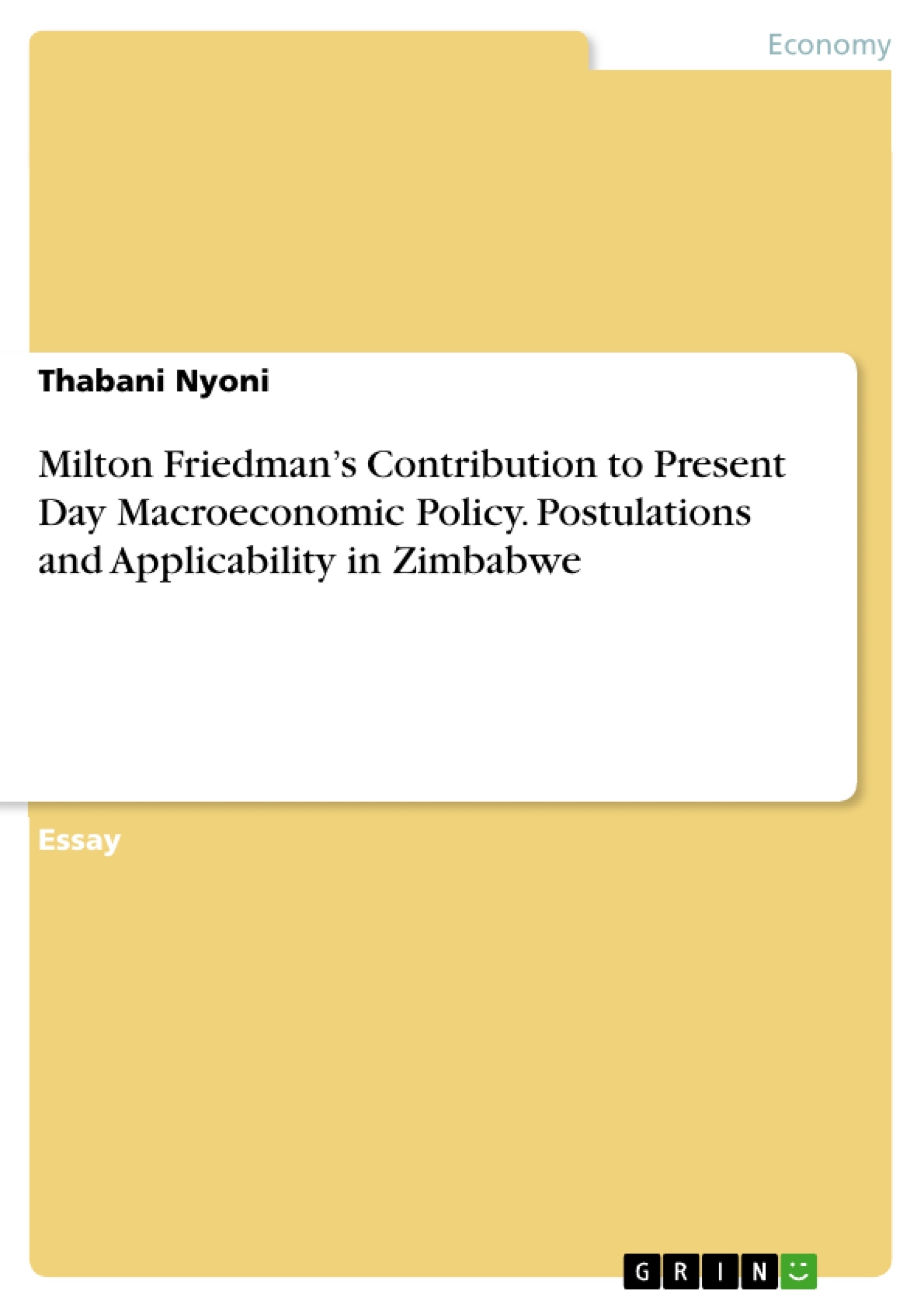Milton Friedman is an American economist who is well known in Economics for down-playing the orthodox Keynesian analysis and policy activism during the 1950s and 1960s. His contribution to present day macroeconomic policy is based on monetarism although there are some contributions which he made such as the permanent income hypothesis. This essay serves to discuss the major contribution of Milton Friedman to present day macroeconomic policy, commenting on the empirical applicability of his postulations in Zimbabwe.
Inhaltsverzeichnis (Table of Contents)
- Milton Friedman's Contribution to Present Day Macroeconomic Policy
- The Quantity Theory of Money
- Friedman's Permanent Income Hypothesis
- Flexible Exchange Rates
- Monetarism and Inflation
- The Natural Rate of Unemployment
- The Expectations-Augmented Phillips Curve
- Rational Expectations and the Natural Rate of Unemployment
Zielsetzung und Themenschwerpunkte (Objectives and Key Themes)
This paper examines the contributions of Milton Friedman to present-day macroeconomic policy. It focuses on his monetarist approach to economics, which challenged traditional Keynesian views on the role of government intervention. The paper explores Friedman's key ideas, including the quantity theory of money, the permanent income hypothesis, flexible exchange rates, and the natural rate of unemployment.
- The Quantity Theory of Money
- The Permanent Income Hypothesis
- Flexible Exchange Rates
- The Natural Rate of Unemployment
- The Expectations-Augmented Phillips Curve
Zusammenfassung der Kapitel (Chapter Summaries)
- Milton Friedman's Contribution to Present Day Macroeconomic Policy: This chapter introduces Milton Friedman and his monetarist school of thought, which emphasizes the importance of money supply in influencing economic activity and price levels.
- The Quantity Theory of Money: This chapter discusses Friedman's restatement of the quantity theory of money, emphasizing the stability of the demand for money function and its implications for the velocity of money.
- Friedman's Permanent Income Hypothesis: This chapter explores Friedman's challenge to the Keynesian view on consumption, arguing that consumption depends on permanent income rather than current income.
- Flexible Exchange Rates: This chapter examines Friedman's support for flexible exchange rates, arguing against the dangers of destabilizing speculation and favoring a market-driven approach.
- Monetarism and Inflation: This chapter highlights Friedman's famous statement that "inflation is everywhere and always a monetary phenomenon," and his advocacy for fixed monetary rules to ensure long-term price stability.
- The Natural Rate of Unemployment: This chapter discusses Friedman's natural rate of unemployment hypothesis, which suggests that there is a long-run trade-off between inflation and unemployment, and that government intervention can only temporarily reduce unemployment below the natural rate.
- The Expectations-Augmented Phillips Curve: This chapter explores Friedman's modification of the Phillips curve, incorporating the expected rate of inflation as a determinant of wage changes and highlighting the importance of adaptive expectations.
- Rational Expectations and the Natural Rate of Unemployment: This chapter examines the implications of rational expectations for Friedman's natural rate of unemployment hypothesis, suggesting that economic agents' rational expectations influence the effectiveness of monetary policy.
Schlüsselwörter (Keywords)
The primary keywords and focus topics of this paper include monetarism, quantity theory of money, permanent income hypothesis, flexible exchange rates, inflation, natural rate of unemployment, expectations-augmented Phillips curve, rational expectations, and adaptive expectations. These concepts represent the core ideas and themes explored in the context of Milton Friedman's contributions to present-day macroeconomic policy.
- Quote paper
- Thabani Nyoni (Author), 2015, Milton Friedman’s Contribution to Present Day Macroeconomic Policy. Postulations and Applicability in Zimbabwe, Munich, GRIN Verlag, https://www.grin.com/document/299841



